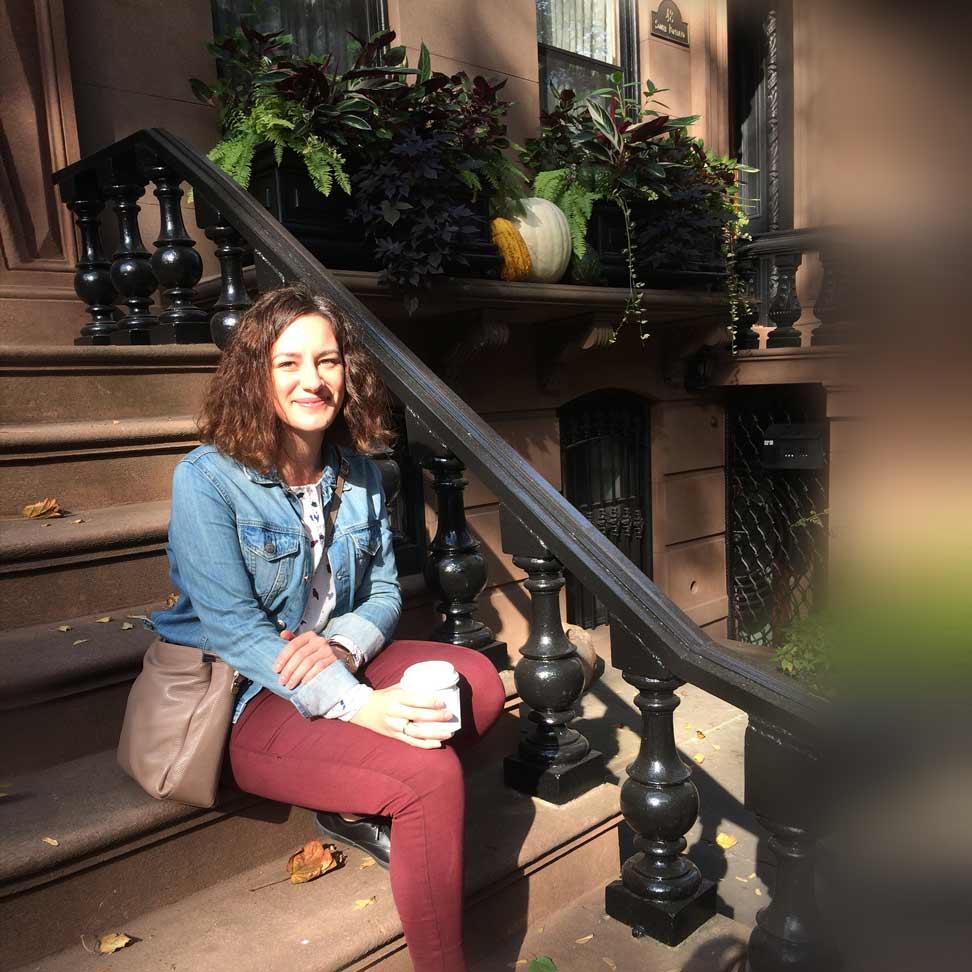The Art Deco movement originated in France at the start of the 1920s and became popular worldwide during the interwar period. Originally called Style Modern, alluding to the “modern materials” used, such as cement, iron and chrome, the Art Deco architecture is defined by an intricate aesthetic blend of traditional motifs, geometric patterns and lively colours.
It’s easy recognisable by the clean, straight lines and ceramic or metal decorations. With its symbols of glamour, exuberance and optimism, this style engulfed not only architecture, but also interior design, fashion and the visual arts.
While Paris, New York and Miami might dazzle you with their famous Art Deco buildings, we show you 10 lesser-known cities brimming with fantastic Art Deco architecture.
Napier, New Zealand
The Temperance & General Building is one of Napier’s most beloved landmarks
In the aftermath of a deadly earthquake in 1931, Napier was rebuilt in the colourful Art Deco style popular at that time. Today it boasts some of the most well-preserved Art Deco architecture in the world.
Walking down the streets of the city, symbols of optimism greet you at each step: brightly-lighted fountains, flower beds, vibrant colours, sunbursts and palm trees. Take a close look at the original chrome and neon fittings at the Municipal Theatre, the stylised palm trees adorning The Daily Telegraph Building, and the rose motifs on the arch above the doors of the National Tobacco Company Building.
Venture out to the Taradale suburb for a Big Mac at McDeco McDonald’s, one of only two Art Deco McDonald’s in the world.
If you’re planning a trip to Napier in mid-February, be sure to check out the annual Art Deco Festival.
Recommended Napier hotel: The Dome, inside The Temperance & General Building (rates start at 322 AUD [£192] per night)
Mumbai, India
The monumental New India Assurance Building
Art Deco became popular in Mumbai during 1920-1940, a period of opulence and optimism. The locals took it to heart due to its focus on modernity and flexibility to adapt to Indian motifs like sculptures of deities and flower symbols.
Art Deco pockets appeared all over the city, especially in the affluent areas of Malabar Hill, Horniman Circle and Oval Maidan. A stroll through these areas will ensure impressive sightings: the many residence buildings along the Oval, the imposing New India Assurance Building and the Soona Mahal building, are just a few architectural gems.
Mumbai is home to five Art Deco cinemas and the Liberty Cinema, one of the most well-preserved, takes cinematic experience to a different time: the lobby has the classic red carpet, seating is provided in stalls and the balconies and the screen are covered in a golden curtain drawn aside before each viewing.
Recommended Mumbai hotel: Hotel Marine Plaza has alluring sea views and grand Art Deco interiors (rates start at 7350 INR [£85] per night)
Asheville, North Carolina, USA
A memorable couple: the robust Buncombe County Courthouse and the flashy Asheville City Hall
In the early 20th century, Asheville was one of the great American boom towns, yet following the stock market crash of 1929, the city found itself in huge debt. Instead of building skyscrapers, like many cities did during this period, Asheville focused on paying the debt and preserving its architecture.
In the city centre, two Art Deco gems located next to each other polarise the cityscape: the massive, 17-storey Buncombe County Courthouse, built in brick and ashlar veneer and featuring complex setbacks, and the colourful, brick and stone Asheville City Hall, boasting an octagonal roof covered in terra cotta tiles.
Another impressive Art Deco landmark is the dome-shaped First Baptist Church. Spot the decoration patterns and surface ornaments revealing its Art Deco style: brick and marble, terra cotta moulding forms and geometric star patterns.
Recommended Asheville hotel: Haywood Park Hotel, housed in the historic Bon Marché Building (rates start at $250 [£188] per night)
Casablanca, Morocco
Wilaya with its famous clock tower
Once the French Protectorate was established in 1912, Casablanca blossomed from a modest port city to a bustling economic hub. The French introduced the Art Deco style that blended perfectly with the Moroccan indigenous geometry and techniques of mosaic and plasterwork.
Stop by Place Mohammed V where four iconic public buildings dominate the square: the Grande Poste, Wilaya with its iconic clock tower, the Palais de Justice with elaborately tiled courtyards, and the Banque d’Etat. Once you’ve ticked these off your list, stroll along Rue Idriss Lhrizi and take a peek at the many Art Deco façades.
For the hidden treasures, head to the Mers Sultan neighbourhood, former playground of French colonialists. The rich are long gone, but the apartment buildings tell the story of a time of grandeur. Notable edifices here include the Café Champs Elyssée, Cinema Lynx and Bar Atomic.
Recommended Casablanca hotel: Hotel Transatlantique, an architectural gem dating back to 1922 (rates start at 430 MAD [£35] per night)
Mexico City, Mexico
Art Nouveau and Art Deco combined at Palacio de Bellas Artes
While there are plenty of Art Deco showcases – 275 to be precise – they’re all concentrated in the bohemian Colonia Condesa neighbourhood. After the devastating earthquake of 1985, most buildings were left damaged and residents started fleeing the area. Artists and students flocked here due to low rents, and things started to pick up again. Modern buildings are popping up next to old ones, and decaying Art Deco treasures are being restored. Art Deco is beautifully entangled with Aztec motifs – fiery colours, ziggurats and geometric patterns – and the streets around Parque Mexico are brimming with Art Deco buildings.
Not far from Condesa, in the historical centre, you’ll find Palacio de Bellas Artes, a gorgeous white-marble palace. While the exterior is designed in an Art Nouveau style, the interior boasts Art Deco decorations, such as a glass and iron roof, serpents’ heads decorating the window arches and Mayan deity masks on light panels.
Recommended Mexico City hotel: Marquis Reforma Hotel, combining Art Deco architecture with modern décor (rates start at 3200 MXN [£125] per night)
Valencia, Spain
Casa Judía, a unique edifice on the Art Deco scene
In the beginning of the 20th century, Valencia experienced an economic boom and the population tripled, becoming Spain’s third largest city. The well-off encouraged urban development and expansion, and while other big cities were adopting modernist designs, Valencia took Art Deco and made it its own.
The vision was to create a city with public spaces for storefront window-shopping, terraced cafes and open streets with arches and passageways. Carrer de la Pau, with its linear layout, was reshaped to abide to this vision. You’ll find many Art Deco examples here, such as Casa Sancho’s angled façade with a polygonal turret and iron-wrought balconies.
At Plaza del Ayuntamiento, marvel at the magnificent Edificio de Correos, combining modernist features with baroque-inspired elements. Casa Judía, an Oriental-inspired edifice boasting splashes of vibrant colours with over-the-top decorations, sits among the most striking Art Deco buildings in Valencia.
Recommended Valencia hotel: Vincci Palace, an oasis of lavish Art Deco designs (rates start at €196 [£170] per night)
Cincinnati, Ohio, USA
One of the Art Deco greats: Cincinnati Union Terminal
New York might take home the title for the most iconic Art Deco architecture, but for a fresh breath of Art Deco, head to Cincinnati instead.
Two buildings dominate the city’s Art Deco scene: Cincinnati Union Terminal and The Carew Tower.
Initially designed in a Neoclassical style, the commissioners requested a design reflecting modernity. The massive Cincinnati Union Terminal is formed in the shape of a rotunda flanked on each side by curving wings. The door is framed by bas-reliefs depicting images of transportation and commerce. Today, this Art Deco treasure houses a museum, theatre and library.
The Carew Tower reigned as Cincinnati’s tallest building until recently, and with its urban arcade, hotel, public spaces, department stores and office spaces, it presented a concept of “city within a city”.
Recommended Cincinnati hotel: Hilton Cincinnati Netherland Plaza, inside The Carew Tower (rates start at $194 [£150] per night)
Durban, South Africa
Surrey Mansions bursts of optimism and joy
The Art Deco craze of the 1930s reached South Africa as well, and port city Durban quickly adopted this new style. Numerous buildings were styled in the Art Deco fashion, reflecting the maritime background of the city and the diverse population.
Among notable and well-preserved architecture examples is Surrey Mansions, a beautiful 1934 building showcasing geometric patterns juxtaposed with carvings of feline motifs on a green, yellow and pink background. The Colonial Mutual Building, modelled after early American Art Deco skyscrapers, plays with African elements, such as geometric eagles, antelopes and lions.
Other great examples include The Quadrant House, called so due to its resemblance to a navigation quadrant, the Enterprise Building decorated with Roman fasces, and The Cenotaph, a war memorial decorated with colourful ceramic tiles depicting angels raising the soul of a dead soldier.
Recommended Durban hotel: Protea Hotel Edward Durban, housed in a beautiful beachfront Art Deco building (rates start at 1850 ZAR [£105] per night)
Brussels, Belgium
Art Deco at highest level: Villa Empain © Lizuka
While being the birthplace of the movement, France’s Art Deco architecture is scattered across the country. If you want a nearby city densely populated with Art Deco architecture, head over the border to Brussels.
Résidence Palace, built in 1923 as a luxury living complex complete with apartments, a theatre, swimming pool, an inner court and other communal spaces – in short, “a city within a city”. Villa Empain, a beautifully restored Art Deco gem, brings lavishness to a new level. The exterior and interior live harmoniously side by side: the façade made of polished granite with 23-carat gold trim and brass corned beads is beautifully linked with the exquisite marbles, rosewood and ironwork found inside.
Finally, the Basilique de Koekelberg, also known as the Art Deco Basilica, reigns high over the Brussels skyline.
Recommended Brussels hotel: Hotel Le Plaza Brussels, an opulent Art Deco palace from 1931 (rates start at €97 [£84] per night)
Shanghai, China
Early morning exercise in front of Shanghai’s famous Art Deco buildings: the Peace Hotel and Bank of China
It’s not a complete surprise that Art Deco reached Shanghai. In the 1920s the city was the sixth largest in the world, teeming with westerners. Chinese architects were returning from their studies in the west, and, when commissioned to design new buildings, developed their own East-West movement featuring traditional Chinese motifs.
The riverfront area, The Bund, contains three of the most iconic and well-preserved Art Deco buildings: the eight-storey Bank of Communications built completely in concrete and framed by black marble around the door; the Peace Hotel, recognisable by the green copper pyramidal roof; finally, the towering Bank of China Building.
The movement lives on with the contemporary “Deco Echo”: from the Jin Mao Building to the Printemps Department store, this city lives and breathes Art Deco. Home to a rich collection of Art Deco architecture, it makes sense to take it all in through a guided tour.
Recommended Shanghai hotel: former French club Okura Garden Hotel (rates start at 2060 CNY [£238] per night)


